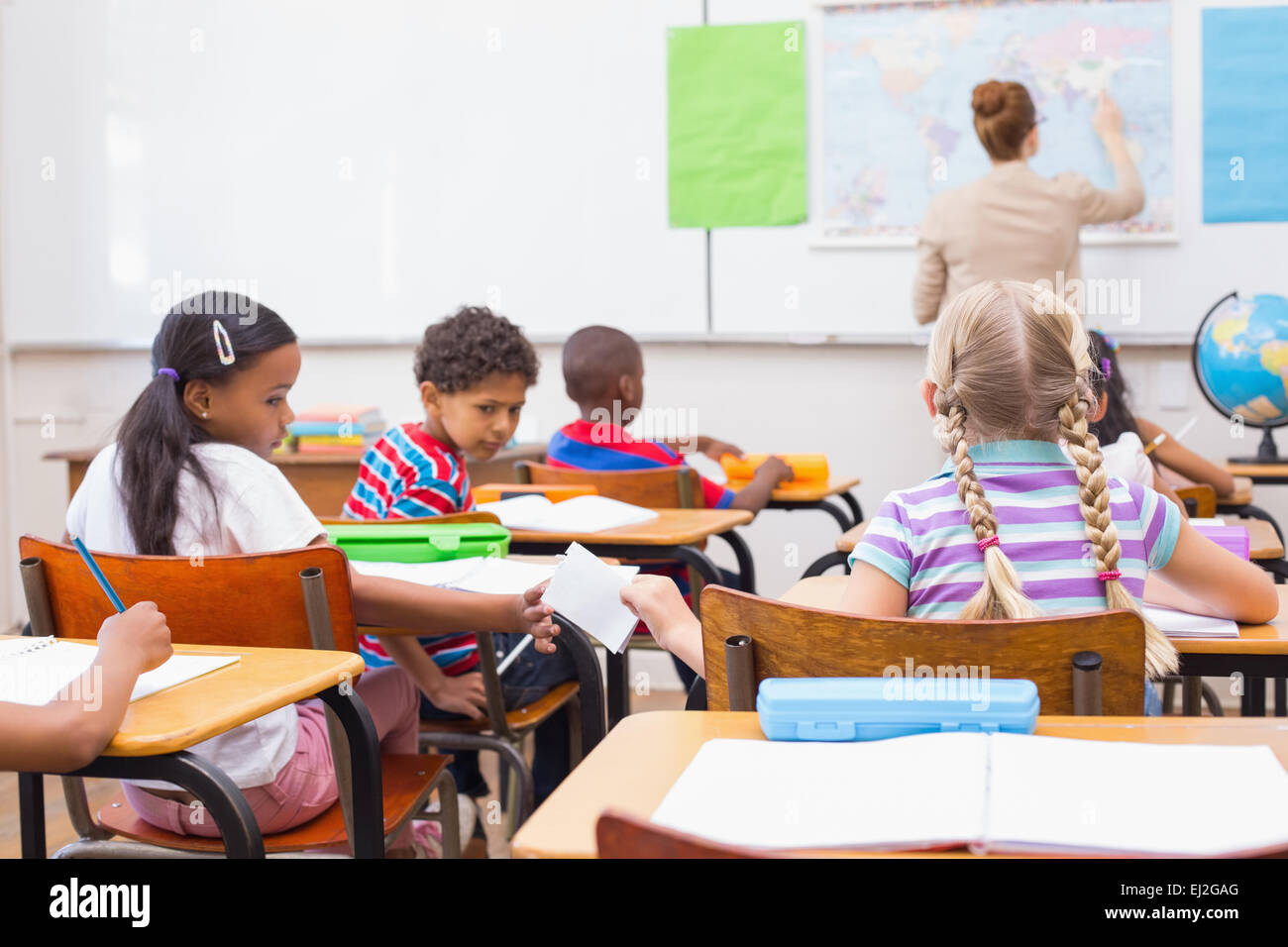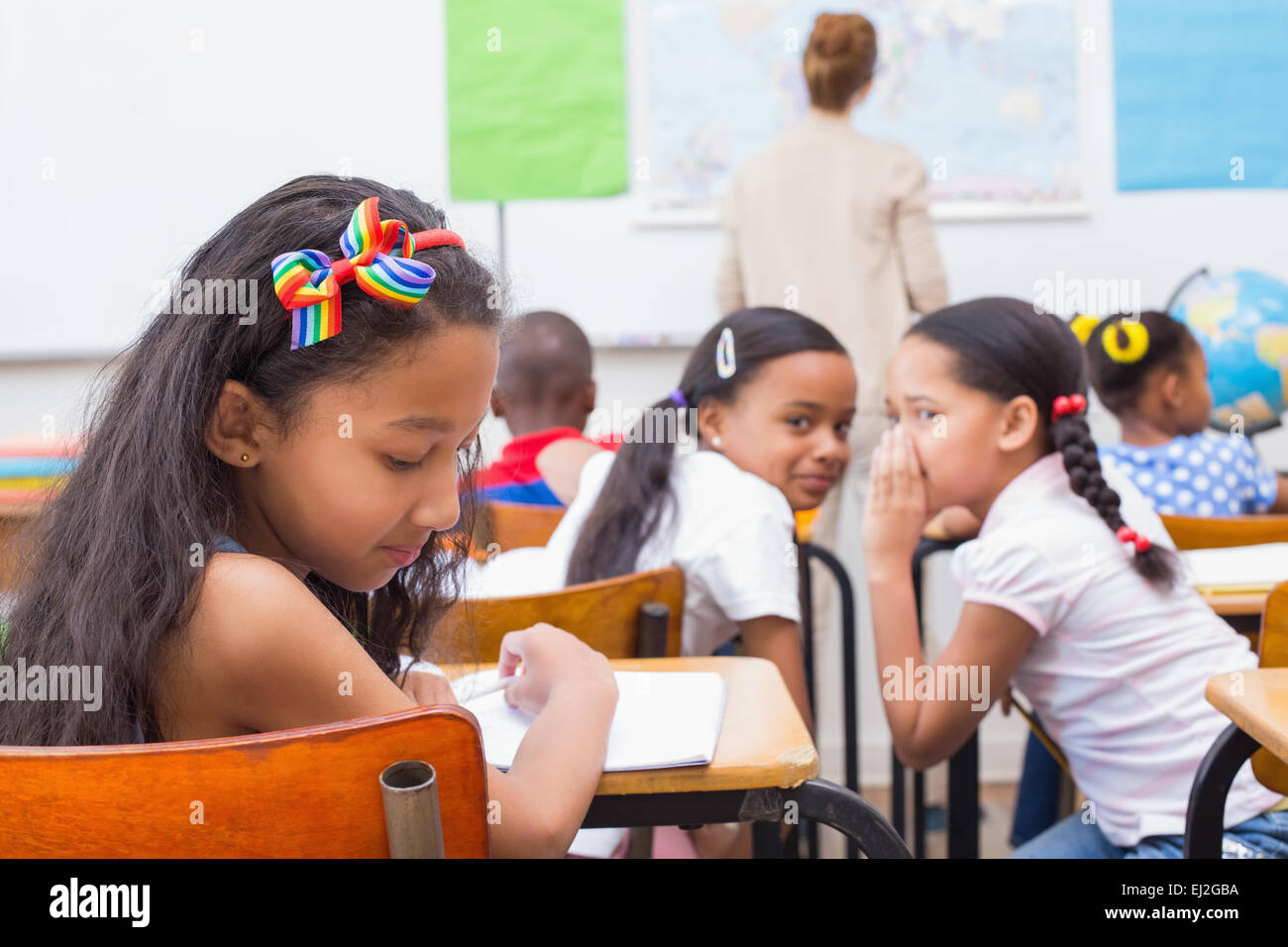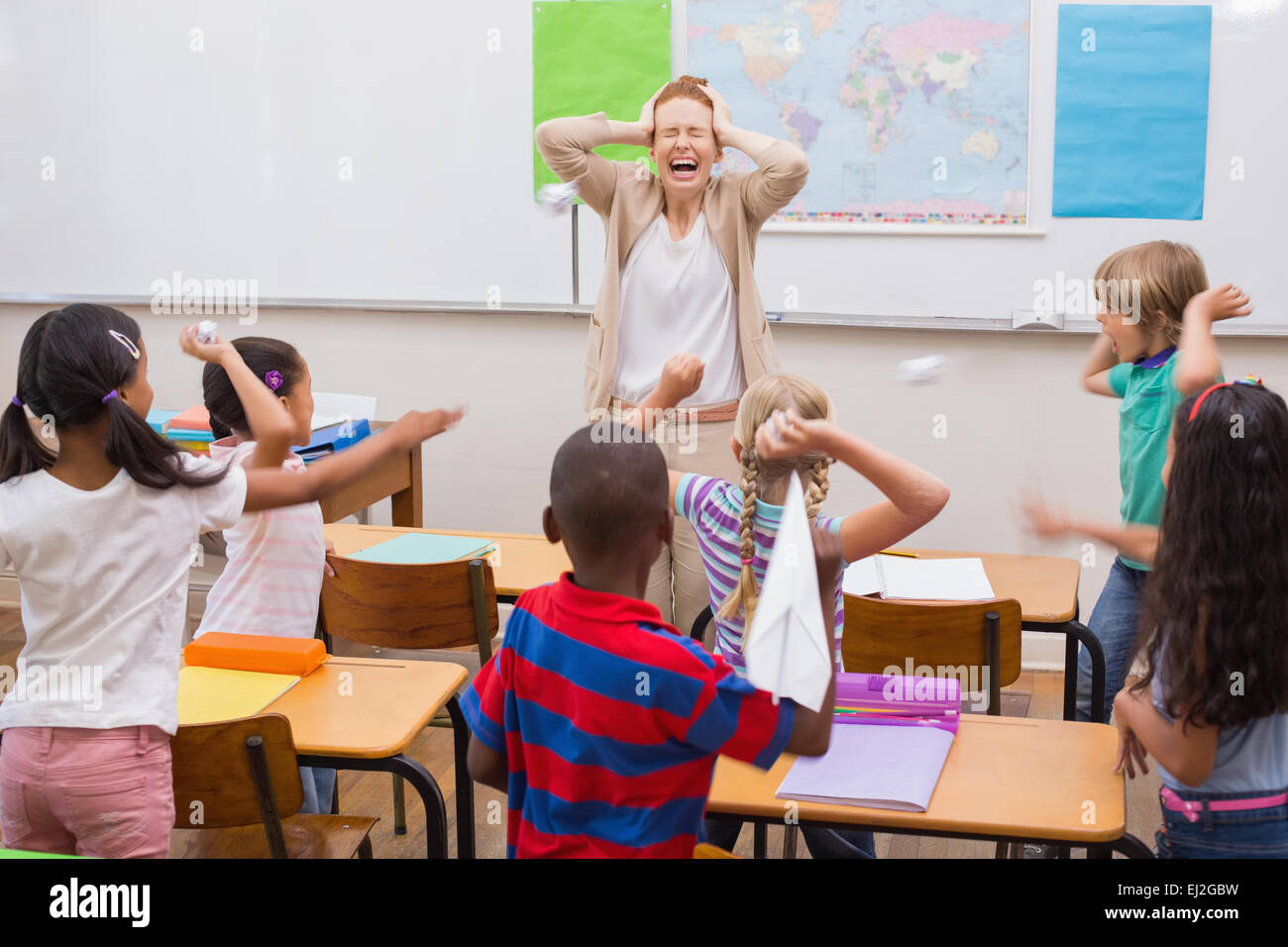Restoring Hope: Navigating Naughty Behavior In Your Classroom
Every educator, at some point in their career, confronts the challenging reality of disruptive student behavior. Teachers often discuss and complain about naughty behaviour of students in class, a common lament that echoes through staff rooms and professional development sessions. It's a universal struggle, whether you're managing a bustling physical classroom or attempting to engage students in a virtual learning environment. The persistent question that occupies their minds is: how to handle or curb their naughtiness? This isn't just about maintaining order; it's about fostering an environment conducive to learning, where every student has the chance to thrive.
The impact of even one or two individuals exhibiting bad behavior can ripple through an entire classroom, negatively affecting the atmosphere, student engagement, and ultimately, learning outcomes. If you find yourself facing trouble handling or dealing with the naughty, difficult, and disrespectful behavior of students, or if you're wondering what to do when your class is out of control, you're not alone. This comprehensive guide is designed to help you navigate these complex situations, offering practical strategies and insights to transform challenging moments into opportunities for growth and, most importantly, to restore hope in your classroom.
Table of Contents
- Understanding "Naughty" Behavior: More Than Just Disruption
- The Quest for Control: When Your Class is Out of Control
- Reclaiming Hope: Practical Strategies for Handling Naughty Students
- Eight Ways to Handle Naughty Student Behavior
- Addressing Difficult and Disrespectful Behavior
- Building a Positive Classroom Culture: The Foundation of Hope
- Collaboration and Support: A Collective Effort
- The Teacher's Resilience: Sustaining Hope in the Face of Challenges
Understanding "Naughty" Behavior: More Than Just Disruption
When educators speak of "naughty students," they are often referring to what is more appropriately termed "disruptive students." These are individuals whose actions interfere with the teaching and learning process, impacting not only their own educational journey but also that of their peers. The spectrum of such behavior is broad, ranging from minor annoyances like incessant chatter or fidgeting to more significant challenges like defiance, aggression, or outright refusal to participate. Understanding the nuances of these behaviors is the first step toward effective management.
- Brattygbaby Leaks
- Theresa Lynn Wood
- Is Kris Jenner Full Armenian
- Reggie Miller Married
- Camilla Araujo Nude Video
Below, we'll have a look at some common types of bad behavior that can manifest in the classroom. These include:
- Attention-Seeking: Students who constantly call out, make unnecessary noises, or engage in clowning around to gain peer or teacher attention.
- Power Struggles: Students who challenge authority, refuse to follow instructions, or argue persistently.
- Avoidance/Escape: Students who disrupt to avoid tasks they find difficult or uninteresting, often by distracting others or feigning illness.
- Disrespectful Conduct: This encompasses rudeness, sarcasm, mocking, or defiance towards teachers or peers.
- Aggression: Physical or verbal aggression towards others, including bullying or intimidation.
- Non-Compliance: Refusal to follow rules, complete assignments, or participate in activities.
- Lack of Engagement: While not always "naughty," chronic disengagement can lead to disruptive behavior as students seek alternative ways to occupy themselves.
The Ripple Effect of Classroom Disruptions
The bad behaviour of just one or two individuals in a group can affect the whole classroom atmosphere in a most negative way. Imagine a classroom where a student constantly interrupts, talks out of turn, or refuses to engage. This single behavior can derail a lesson, force the teacher to divert attention from instruction to discipline, and frustrate other students who are eager to learn. The learning flow is broken, and the collective energy of the class shifts from productive engagement to managing disruption. Over time, this can lead to decreased morale for both teachers and students, creating a cycle where disruptive behavior becomes more prevalent as the positive classroom culture erodes. It's a significant challenge that impacts not just academic progress but also the social-emotional well-being of everyone involved.
Identifying the Roots of Naughtiness
Understanding why a student is acting out is paramount to addressing the behavior. Naughtiness, or disruptive behavior, rarely occurs in a vacuum. It can stem from a myriad of factors, including unmet academic needs (e.g., the work is too hard or too easy), social-emotional challenges (e.g., anxiety, trauma, lack of social skills), home environment issues, or even a need for attention. Sometimes, students simply lack the self-regulation skills to manage their impulses or emotions. A student might be acting out because they are bored, confused, tired, hungry, or seeking connection. Identifying these underlying causes requires observation, empathy, and sometimes, direct communication with the student or their guardians. It's about looking beyond the surface behavior to understand the message the student is trying to convey, which can help teachers tailor more effective interventions and restore hope for positive change.
The Quest for Control: When Your Class is Out of Control
There are moments in every teacher's career when the feeling of losing control becomes overwhelming. Perhaps a lesson has gone awry, student engagement has plummeted, or a series of minor disruptions have escalated into widespread chaos. Do you want to know what to do when your class is out of control? This feeling of a class being "out of control" can be incredibly disheartening, eroding a teacher's confidence and making the classroom feel like an adversarial space rather than a collaborative one. It's a common experience, and recognizing it is the first step toward regaining command. The quest for control isn't about authoritarianism; it's about establishing a predictable, safe, and productive learning environment where both teachers and students can thrive. It requires a strategic approach, blending immediate interventions with long-term preventative measures to foster a sense of order and purpose.
Proactive vs. Reactive Strategies
When dealing with disruptive behavior, educators often find themselves caught in a cycle of reactive responses – addressing problems only after they occur. While reactive strategies are necessary for immediate crisis management, a truly effective approach to classroom control emphasizes proactive measures. Proactive strategies are about setting up the classroom environment and routines in a way that minimizes the likelihood of naughty behavior emerging in the first place. This includes establishing clear expectations, building strong teacher-student relationships, designing engaging lessons, and teaching social-emotional skills. Reactive strategies, on the other hand, are the tools used to address misbehavior as it happens, such as redirection, consequences, or time-outs. A balanced approach, heavily weighted towards proactive prevention, is the most sustainable way to maintain a calm and focused classroom, ultimately helping to restore hope for a productive learning experience.
Reclaiming Hope: Practical Strategies for Handling Naughty Students
The question of how to handle or curb their naughtiness is one which comes to every teacher's mind when they think about classroom management. Reclaiming hope in a challenging classroom begins with implementing practical, consistent strategies. It’s about creating a structured yet nurturing environment where students understand expectations and feel supported. This involves more than just punishment; it requires a deep understanding of student behavior and a commitment to positive interventions. Effective strategies focus on preventing misbehavior before it starts, responding thoughtfully when it does occur, and teaching students the skills they need to self-regulate and make better choices. By consistently applying these methods, teachers can gradually shift the classroom dynamic, fostering a more respectful and productive space where learning can flourish and the initial hope for a positive educational journey is rekindled.
Eight Ways to Handle Naughty Student Behavior
Teaching in a virtual class is already challenging, let alone getting your students’ attention and keeping them engaged. The same can be said for physical classrooms. Managing naughty behavior requires a repertoire of strategies. Here are eight effective ways to handle disruptive student behavior, applicable in both traditional and online settings:
Establish Clear Expectations and Consequences: From day one, clearly articulate classroom rules and the consequences for breaking them. Display them prominently and review them regularly. Consistency is key; students need to know that rules will be enforced fairly and predictably. This clarity reduces ambiguity and gives students a framework for appropriate conduct.
Utilize Positive Reinforcement: Focus on catching students being good. Acknowledge and reward positive behavior, effort, and compliance. This could be verbal praise, positive notes home, or a class reward system. Positive reinforcement encourages desired behaviors and creates a more optimistic classroom atmosphere, shifting the focus from what students are doing wrong to what they are doing right. This can significantly reduce the instances of naughty behavior.
Implement Proximity Control: Simply moving closer to a disruptive student can often curb misbehavior without verbal intervention. Your physical presence can be a powerful, non-verbal cue that you are aware of their actions and expect them to re-engage. This technique is subtle and effective, especially for minor disruptions like off-task chatter or fidgeting.
Use Non-Verbal Cues: A look, a raised eyebrow, a hand signal, or a slight shake of the head can often communicate your disapproval without interrupting the lesson. These cues are discreet and allow the lesson to continue flowing while addressing the behavior directly. Students learn to recognize these signals, making them effective tools for managing minor disruptions.
Design Engaging Lessons: Boredom is a common trigger for disruptive behavior. Ensure your lessons are varied, interactive, and relevant to students' lives. Incorporate hands-on activities, group work, technology, and opportunities for student choice. When students are actively engaged and intellectually stimulated, they are less likely to seek alternative, disruptive ways to occupy themselves.
Build Strong Teacher-Student Relationships: Students are more likely to behave for teachers they respect and feel connected to. Take time to get to know your students individually, show genuine interest in their lives, and build rapport. A positive relationship can be a powerful deterrent to misbehavior, as students are less likely to disappoint someone they trust and admire. This foundational connection can instill hope in the classroom dynamic.
Employ Planned Ignoring (for minor behaviors): For very minor, attention-seeking behaviors that are not disruptive to others, sometimes the most effective response is to ignore them. When the behavior doesn't yield the desired attention, it often extinguishes itself. However, this strategy must be used judiciously and only for behaviors that are truly minor and not escalating. It's crucial to acknowledge positive behavior immediately once the disruptive action ceases.
Utilize Behavior Contracts or Individualized Plans: For students with persistent or significant behavioral challenges, a formal behavior contract can be highly effective. This involves working with the student (and often parents) to set specific behavioral goals, outline strategies, and define rewards and consequences. These individualized plans provide structure and accountability, helping students take ownership of their behavior and make progress.
Addressing Difficult and Disrespectful Behavior
Are you facing trouble handling or dealing with the naughty, difficult, and disrespectful behavior of students? These types of behaviors often require a more direct and structured approach than simple redirection. Disrespect can manifest as backtalk, defiance, or outright refusal to comply with requests. Such actions not only undermine your authority but also create a hostile environment for other students. When confronted with difficult or disrespectful behavior, it's crucial to remain calm, assertive, and professional. Avoid engaging in power struggles or emotional responses, as this can escalate the situation. Instead, focus on de-escalation techniques and clear, consistent consequences. Remember that every interaction is an opportunity to teach, even in challenging moments. The goal is to address the behavior while preserving the student's dignity and fostering a path toward more appropriate conduct, thereby maintaining hope for a positive classroom.
De-escalation Techniques
When a student's behavior is escalating towards defiance or disrespect, knowing how to de-escalate the situation is paramount.
- Stay Calm: Your emotional state can significantly influence the student's. Maintain a calm demeanor, speak in a low, even tone, and avoid aggressive body language.
- Private Conversation: Whenever possible, address the behavior privately, away from the audience of peers. This reduces the student's need to "save face" and makes them more receptive to your message.
- Offer Choices: Give the student a choice between two acceptable options (e.g., "You can either complete this task now or work on it during recess. Which do you prefer?"). This gives them a sense of control and reduces resistance.
- Active Listening: Listen to the student's perspective without judgment. Sometimes, simply feeling heard can diffuse tension. Validate their feelings, even if you don't agree with their actions.
- Set Clear Boundaries: Reiterate expectations firmly but calmly. "I understand you're frustrated, but our rule is no shouting in class."
- Take a Break: Suggest a cool-down period for the student, or even for yourself if needed. A brief separation can help both parties regain composure before addressing the issue further.
Building a Positive Classroom Culture: The Foundation of Hope
While specific strategies address naughty behavior, the most powerful long-term solution lies in cultivating a robustly positive classroom culture. This isn't just about managing disruptions; it's about creating an environment where students feel safe, respected, and valued, and where learning is seen as a collaborative and enjoyable process. A strong classroom culture acts as a preventative measure, reducing the likelihood of misbehavior because students are intrinsically motivated to contribute positively. It involves fostering a sense of community, promoting empathy, and encouraging mutual respect among all members. This means actively teaching social-emotional skills, celebrating diversity, and providing opportunities for students to take ownership of their learning and their classroom environment. When students feel a strong sense of belonging and purpose, the instances of disruptive behavior naturally diminish, and the overall atmosphere becomes one of shared responsibility and collective hope for success.
Collaboration and Support: A Collective Effort
Teachers don't have to face the challenges of disruptive behavior alone. Effective classroom management, particularly when dealing with persistent or severe naughty behavior, often requires a collective effort. This involves open communication and collaboration with various stakeholders. Parents are invaluable partners; keeping them informed about both positive behaviors and concerns, and working together on consistent strategies, can significantly impact a student's conduct. School administrators and support staff, such as counselors, special education teachers, and behavioral specialists, offer crucial expertise and resources. They can provide insights into underlying issues, suggest specialized interventions, or offer direct support to students. Seeking professional development opportunities in classroom management or positive behavior interventions and supports (PBIS) can also equip teachers with new tools and perspectives. Leaning on this network of support not only provides practical assistance but also reinforces the idea that managing student behavior is a shared responsibility, fostering a sense of solidarity and renewed hope for educators.
The Teacher's Resilience: Sustaining Hope in the Face of Challenges
Dealing with challenging student behavior can be emotionally and physically exhausting. The constant need to manage disruptions, address disrespect, and maintain control can take a significant toll on a teacher's well-being. It's easy to feel discouraged, frustrated, and even lose the initial passion that led one to the profession. However, sustaining hope in the face of these challenges is crucial for both the teacher's longevity and the students' success. This requires building personal resilience. Strategies for teachers include prioritizing self-care, seeking mentorship or peer support, celebrating small victories, and remembering the profound impact they have on students' lives. It's also vital to practice reflective teaching, learning from each challenging situation without dwelling on perceived failures. Understanding that every day is a new opportunity to connect, teach, and inspire can help teachers maintain their optimism and commitment. By nurturing their own well-being, teachers are better equipped to model resilience for their students and continue to foster an environment where every student, even those prone to naughtiness, has the chance to learn and grow.
Conclusion
The journey of teaching is undeniably rewarding, yet it comes with its unique set of challenges, particularly when navigating the complexities of student behavior. We've explored how "naughty students," or more accurately, disruptive students, can be found in every classroom, and how their actions can significantly impact the learning environment. From understanding the root causes of misbehavior to implementing proactive and reactive strategies, the goal remains the same: to create a classroom where every student can thrive and where teachers can truly teach. By establishing clear expectations, building strong relationships, designing engaging lessons, and consistently applying effective management techniques, you can transform a chaotic classroom into a calm, productive space.
Remember, the question of "how to handle or curb their naughtiness" is a continuous process of learning and adaptation. You are not alone in facing trouble handling the difficult and disrespectful behavior of students. By applying the eight practical strategies discussed, and by fostering a positive classroom culture built on mutual respect and collaboration, you can reclaim control and, most importantly, restore hope in your classroom. We hope this guide has provided you with valuable insights and actionable steps. We encourage you to share your own experiences and successful strategies in the comments below, or explore other articles on effective classroom management on our site. Your dedication shapes the future, one well-managed classroom at a time.



Detail Author:
- Name : Annamae Kris
- Username : kellen84
- Email : xcrist@reinger.org
- Birthdate : 1986-07-22
- Address : 864 Ramona Springs Augustinemouth, ID 51999
- Phone : +1.270.838.4237
- Company : Volkman-Jaskolski
- Job : Camera Operator
- Bio : Aliquam qui veritatis iure dolore. Eveniet maiores aperiam rerum qui. Et debitis dolorum consequatur minus assumenda.
Socials
twitter:
- url : https://twitter.com/samantha.shanahan
- username : samantha.shanahan
- bio : Omnis deserunt quo aut veniam modi. Illum et a qui delectus. Beatae quis amet voluptatibus et voluptatem sapiente asperiores.
- followers : 6467
- following : 2435
instagram:
- url : https://instagram.com/samantha_shanahan
- username : samantha_shanahan
- bio : Assumenda velit ut omnis eaque aut adipisci. Ut qui qui sed dolor.
- followers : 2636
- following : 2019
tiktok:
- url : https://tiktok.com/@shanahans
- username : shanahans
- bio : Quo eveniet repellendus deleniti neque. Et a voluptatibus aliquid unde.
- followers : 6737
- following : 2123
